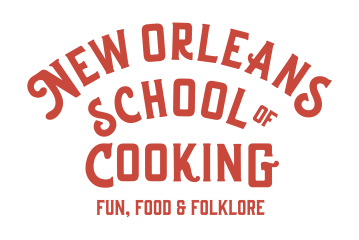-
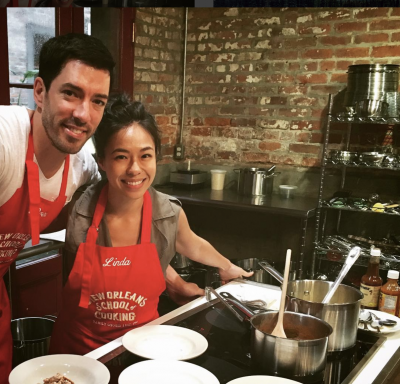 LINDA PHAN: EVERYTHING TO KNOW ABOUT DREW SCOTT’S FIANCÉE
LINDA PHAN: EVERYTHING TO KNOW ABOUT DREW SCOTT’S FIANCÉEBy. Amanda Cabral – November 6, 2017
Drew Scott of the Property Brothers is all over the news after his recent engagement to Linda Phan, and his stint on Dancing with the Stars. Linda Phan, the creative director for the company Scott owns with his twin brother, will soon star alongside him in a new show!Read on to know more about Drew Scott’s fiancée, Linda Phan and what they’ve got in store!
Raise your hand if you are a fan of HGTV’s Property Brothers! The Scott twins are America’s favorite home renovation duo, and it should come as no surprise that Drew Scott broke millions of hearts when he popped the question to Linda Phan, his girlfriend of seven years, last December. So, who is Drew Scott’s fiancée? We have the scoop on Linda Phan.
Scott’s Long Time Love
Drew Scott and Linda Phan met at an event during Toronto Fashion Week in 2010, and were still dating when Scott proposed to her in the same city in December 2016. They plan to have the wedding in Spring 2018, and even though they haven’t zeroed in on a location yet, they know it will be in Europe.
One interesting fact about the pair is their difference in height. At 5’2”, Phan is almost a foot shorter than Scott! But it looks like neither of them seem to mind and their cute pictures together are still winning hearts all over social media.
Creativity Is Her Domain
Scott described both himself and Linda Phan, age 31, as “workaholics.” She is the creative director of Scott Brothers Entertainment, the company owned by the twins, and manages their TV commitments, as well as the company’s branding and marketing strategies.
Phan brought her background in architecture and strong creative sensibilities to the table as the company looks to strengthen their marketing campaigns and digital presence. Linda Phan’s job also includes providing vision and perspective to make sure the company has a great social media presence, and keeps up on their philanthropic activities.
Playing the Support Card
Scott’s newest role as a participant on Dancing with the Stars (alongside Emma Slater) has earned him a fresh wave of fans and, as clear from her Instagram page, Phan is front and center cheering on her man!
Drew Scott’s Dancing with the Stars gig has taken off, and he hopes it will pay off in the form of a spectacular first dance routine at his wedding. Scott also shared that Phan loves to dance as much as him, and is a very fast learner.
The Instagram Foodie Queen
When Linda Phan’s Instagram is not flooded with pictures of her and Scott, she does showcase the dishes she’s cooked, as well as many gastronomic adventures at different restaurants. From pictures of delicious gluten-free donuts, to date nights with Scott at the New Orleans School of Cooking, Phan is a true foodie at heart. We think it’s safe to say that, other than Scott, food is her other love!
Until the wedding bells ring, Phan’s eyes are only on Scott’s DWTS journey, and their upcoming reality TV venture together. The two will appear on Property Brothers at Home: Drew’s Honeymoon House. So, all you Property Brothersfans, look out for more of Scott and Phan’s adventures coming your way!
-
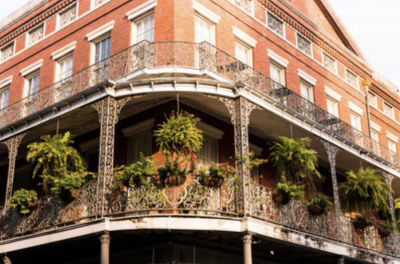 ROAD SCHOLAR OFFERS GREAT VALUE AND NEW INCENTIVES FOR BOOMERS AND BEYOND
ROAD SCHOLAR OFFERS GREAT VALUE AND NEW INCENTIVES FOR BOOMERS AND BEYONDPress Release PR Newswire
BOSTON, Oct. 24, 2017 /PRNewswire-USNewswire/ — Road Scholar, the not-for-profit world leader in educational travel, offers more than 5,500 learning adventures for adults for whom learning is the journey of a lifetime. The organization provides great value and for selected learning adventures it includes free airfare, single rooms at no extra cost or a special savings if you enroll early.
“For those who wish to experience a truly transformational learning adventure, there is no better option than Road Scholar,” says James Moses, president and CEO of Road Scholar. “Our participants do their research and in the end, they return to Road Scholar time after time because they realize that we offer more than great value—we offer an educational adventure that simply cannot be found elsewhere or replicated on one’s own.”
In addition to a rich educational experience led by expert instructors, there are no hidden costs on a Road Scholar program. Every Road Scholar program includes accommodations, activities and lectures, in-program transportation, most meals, insurance, taxes and tips. First time participant Marcie from Rockford, Illinois recently wrote to us to share her experience on her Road Scholar program in New Orleans:
“My husband and I very much enjoyed this experience! If we had gone by ourselves, we would have seen the French Quarter, but never would have opened ourselves up to all of the other aspects of New Orleans, i.e. the Garden District, the rebuilding after Hurricane Katrina, the cemetery, National Park Jazz Museum, and the New Orleans School of Cooking to name a few. The cost is very fair for the excellent lectures, instructors and staff, field trips, and accommodations. I highly recommend this!”
See Road Scholar learning adventures with free airfare: https://www.roadscholar.org/special-offers/Airfare-Specials.
Take advantage of a lower price when you enroll early on these learning adventures: http://www.roadscholar.org/special-offers/enroll-early-and-save.
Road Scholar is the nation’s largest not-for-profit educational travel organization for adults – a true university of the world. Road Scholars are immersed in educational activities led by expert faculty who offer insider access not available to most people. It offers 5,500 programs in 150 countries and 50 states, as well as financial aid for those who otherwise could not participate in its programs.
View original content with multimedia:http://www.prnewswire.com/news-releases/road-scholar-offers-great-value-and-new-incentives-for-boomers-and-beyond-300542129.html
SOURCE Road Scholar
-
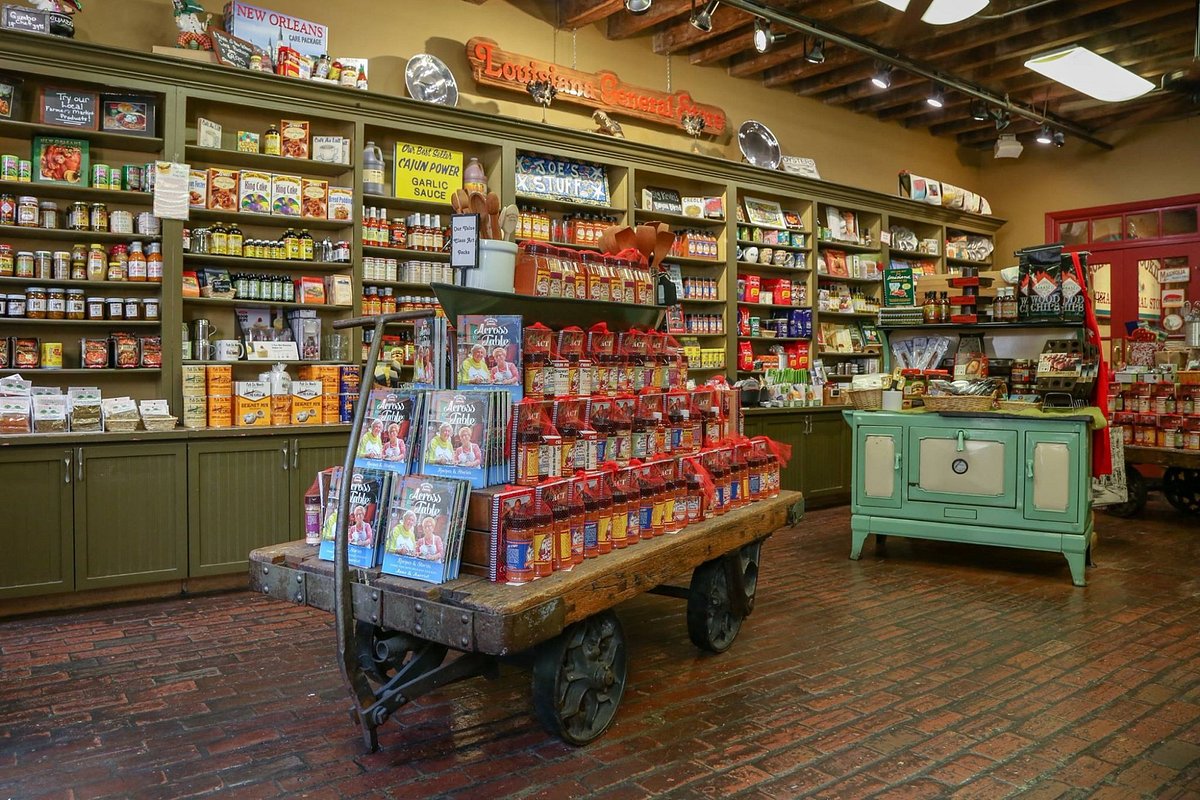 HOW TO SPEND 24 HOURS IN NEW ORLEANS, IF YOU LOVE TO COOK, DANCE, EAT
HOW TO SPEND 24 HOURS IN NEW ORLEANS, IF YOU LOVE TO COOK, DANCE, EATNOLA.COM Ann Maloney
I dream of taking mid-week breaks, of jumping off the work grind and heading out into the Crescent City to eat, drink and listen to great music.
A mid-week holiday means fewer crowds. And, food is my work, but it is also my hobby, so my ideal day might lead to browsing through international markets, cookbook and kitchen wares stores and maybe even taking a cooking class.
Looking to make the most out of a Wednesday night in New Orleans? Come along with me for a nearly 24-hour excursion into my hometown.
Fresh air and exercise
New Orleans City Park, 1 Palm Drive
As we head into fall, seeing the sun rise becomes a more reasonable endeavor as it comes up just before 7 a.m. Grab a bag of stale bread ends and put it in your knapsack and head to City Park.
Carry coffee in a Thermos or, better yet, head to Morning Call, which is open 24 hours. Get a café au lait and split an order of beignets.
If you ride, bring or ride your bike to City Park. Then, ride or stroll over to the Big Lake, near Winser and the park entrance, and watch the sun come up over the water. As you sit, the park will come to life with walkers and runners, parents with strollers.
Spend a few hours people watching, feed the geese, ducks and turtles in the lagoon, climb the low-lying branches of the hundreds-years-old oaks or just stroll under them, if you prefer. Bring a camera, book or sketch pad, if you like. (The park has paddle boats, canoes and bikes to rent, but the stands don’t open until 10 a.m.)
Note: City Park is the site of numerous events and festivals, including Voodoo Music and Art Experience Halloween weekend.
A bit of culture
New Orleans Museum of Art, 1 Collins Diboll Circle, New Orleans
Open 10 a.m. to 6 p.m. on Wednesdays.Feeling hot and sticky? Cool down in the New Orleans Museum of Art, which is free on Wednesdays for Louisianians (courtesy of The Helis Foundation). The museum has an excellent collection of African art, textiles and photography, but it is the paintings that draw me: Mary Cassatt’s “Mother and Child in the Conservatory” and William-Adolphe Bouguereau’s “Whisperings of Love.”
Need a light snack or a sip? Step into Café NOMA, get an iced tea and split a cheese board.
Wrap up the park visit with a stroll through the sculpture garden, which is open 10 a.m. to 6 p.m. and is always free. Look for the Louise Bourgeois’ giant spider and the Lin Emery’s silver “In Motion” sculpture.
[Toups South located on Oretha Castle Haley Blvd., New Orleans]
David Grunfeld, NOLA.com | The Times-Picayune archive
Food to eat and for thoughtToups South, 1504 Oretha Castle Haley Blvd.
Lunch and dinner, 11 a.m. to 10 p.m. Closed Tuesdays.Southern Food and Beverage Museum, 1504 Oretha Castle Haley Blvd.
Monday through Friday, 11 a.m. to 5:30 p.m.Head to Central City for lunch at Toups South, where chef Isaac Toups’ “Cajun-inspired food… is a rambunctious mix of creativity, high craft and straight homage.” Check out dishes, such as smoked lamb leg or goat tamales. Seafood might include a Gulf snapper or a Louisiana Gulf stew.
After lunch, step into the adjacent Southern Food and Beverage Museum and the Museum of the American Cocktail. A slow stroll through the exhibits – some permanent, some changing –serves as an education about the city’s and the region’s culinary history. One exhibit up through the end of 2017: chef tattoos, featuring Toups and others.
If you’re really a food nerd, head across the street to SoFab’s Culinary Library, 1609 Oretha Castle Haley Blvd., and ask to be directed to chef Paul Prudhomme’s personal collection. Open his books and see his handwritten notations on everything from recipes to business strategies. (Library hours may vary, so check at the museum before heading there.) The library contains more than 11,000 volumes, from cookbooks to archival documents.
New Orleans School of Cooking, 524 St. Louis St.
The Tea and Spice Exchange, 521 St Louis St.
Pepper Palace, 224 Chartres St. and 1 French Market Place
Lucullus Antiques, 610 Chartres St.After lunch, do a little window shopping in the French Quarter. You might start at New Orleans School of Cooking, which opened in 1980. Check out the general store to see the school’s line of products and spices. The school hosts daily cooking classes as well, but reservations are recommended.
Next, stroll over to the Spice and Tea Exchange of New Orleans, which is a great place to find a variety of salts and sugars as well as spices, oils and extracts.
Speaking of spice, if you’re into hot sauces, check out the Pepper Palace. The chain has just about any you could imagine.
Then, walk just a few blocks upriver to Lucullus (pictured), which has been in business for more than 30 years, and specializes in 17th, 18th and 19th century culinary antiques.
Alternatives
No longer in the French Quarter, but still on my list of must-visits for food lovers, is Kitchen Witch, 1452 N. Broad St., where you can put your hands on hard-to-find cookbooks.
Also, for a more practical used kitchen gadget, visit Seasoned, 3824 Dryades St., where co-owners Betsy and Paige Lindell sell vintage and new ware for dining, cooking and entertaining.
Also, Simplee Gourmet, 1000 Girod St., is spot for a little high-end kitchen shopping, or take a cooking class.
A sip and a bite to cool down
Arnaud’s French 75, 813 Bienville St.
After all of that walking and shopping, slipping into this sleek, narrow bar feels just right. It’s time for a cocktail and likely a snack. The bar is connected to Arnaud’s Restaurant, so the whole menu is available. Explore the cocktail menu, or do what I do and get a French 75, which is made with Courvoisier VS Cognac, sugar, lemon juice, Moët & Chandon Champagne. That, and an order of soufflé potatoes, will be just right. If it is just too crowded, head into Arnaud’s restaurant and see if you can find a seat at the Richelieu Bar, which is tucked away inside.
Perchance to dance
The Tin Men at d.b.a., 618 Frenchmen St.
Head to Frenchmen Street and stroll a bit, poking your head into a few bars and music clubs, but end up at dba to dance to the Tin Men, featuring percussionist Washboard Chaz, sousaphonist Matt Perrine and guitarist Alex McMurray. The Tin Men perform from 7 to 9 p.m. most Wednesday nights. The bar has an impressive menu of premium spirits, wines as well as about 100 bottled beers, 40 single-malt scotches and tequilas and ample options for rums and bourbons, ryes and whiskeys. I usually stick with prosecco.
Sylvain, 625 Chartres St.
If after dancing for a couple of hours, you feel like another snack, head over to Sylvain, which serves until 11 p.m. It’s a good idea to make a reservation, just to be sure you’ll get a table. If the weather is fine, you can sit on the patio outside. If not, grab a seat at the bar. The cozy dining room is a fine place for a well-made cocktail and meal. The Sazeracs are delicious. Not very hungry? Split the fried chicken sandwich, which is an homage to Chick-fil-A, but so much better.
Hey, it’s still early
Maple Leaf, 8316 Oak St.
Snake & Jake’s, 7612 Oak St.If you wrap dinner by 10:30 or so, you can head Uptown and catch live music at the Maple Leaf until midnight. Then, hang out for a while. The bar stays open as long as there is a crowd.
If it’s too late for that, there are a number of late-late-night places to go for a last drink.
If you’ve heard of it, but never been. Or, if you’ve been, but it’s been ages, head to Snake and Jake’s Christmas Club Lounge Uptown. Buy a “shot” for Pet Peeve, the rescue dog, who is now doing what he can to raise money for hurricane victims. (Each $2 dog-friendly shot is donated to the cause)
Alternatives
Find your way to Mimi’s in the Marigny, 2601 Royal St., for a game of pool and tapas.
Our ’24 hours in New Orleans’ project: Like suggestions for how to spend 24 hours in New Orleans? Each member of the entertainment staff from NOLA.com | The Times-Picayune is offering his or her take on how to spend a day in our city. Check out a few here:
Read movie critic Mike Scott’s suggestions here for how to spend 24 hours in New Orleans, from a movie buff’s point of view.
Check out arts and culture writer Doug MacCash’s tour for folks with eclectic taste from graffiti and Hand Grenades to fine arts and biking.
Let West Banker and life and culture editor Melinda Morris share her favorite haunts in Algiers Point.
-
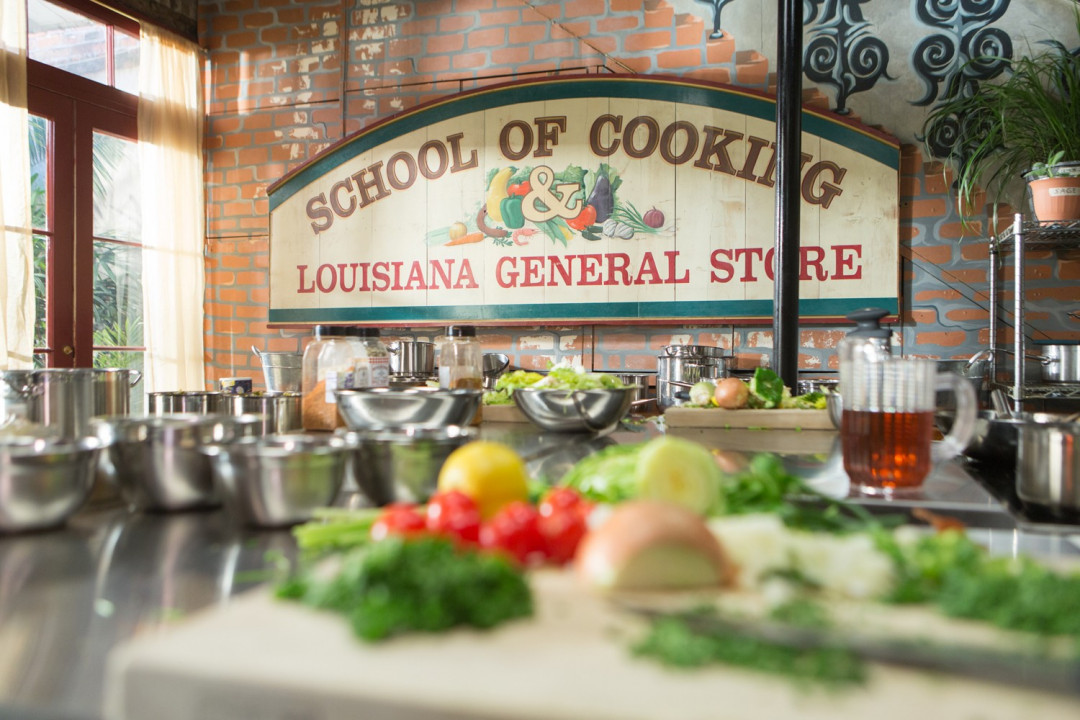 AN IRREVERENTLY HONEST LITERARY TOUR OF NEW ORLEANS
AN IRREVERENTLY HONEST LITERARY TOUR OF NEW ORLEANSBy TONY PHILLIPS
It sounds high-minded: a literary tour of New Orleans. But like most things in this crescent city, scratch a bit at the ornate gold crown and you’re looking at fingernails full of paste. For every grandiosity, there is indeed a seedy underbelly, and so went this literary tour of the Big Easy as we bravely boarded a flight unsure if we’d be flying directly into Hurricane Harvey over the Labor Day weekend.
BUY THE BOOK
Top 10 New Orleans
by DK Travel
BARNES & NOBLEINDIEBOUNDAMAZONIBOOKS
Our first stop was the famed, family-owned Hotel Monteleone, tucked into the corner of Royal and Iberville Streets, if the French Quarter’s only skyscraper could be said to be tucked into anything. We rushed through the lobby of this 1886 Beaux-Arts gem past four generations of Monteleones staring down at us from burnished, oil canvases and there it was: the Carousel Piano Bar and Lounge.
We’d like to say it made it to the top our list because Ernest Hemingway, Tennessee Williams, and William Faulkner were fond of the slow, fifteen-minute rotations of this twenty-five-seat revolving bar that debuted in 1949, but we’d seen it featured in this summer’s guilty pleasure “Girls Trip” and immediately wondered if it actually existed. And indeed it did, garish circus lights and all. In fact, Truman Capote used to take the bar for a spin, telling patrons he was born in the hotel and everyone from Eudora Welty to Stephen Ambrose set pieces here.
We climbed up into one of the elegant, hand-painted chairs and ordered up a Vieux Carré cocktail created here in the late ‘30s. The cough medicine-blend of cognac, rye, and vermouth was enough to get day-drinking started with a bang and our informative bartender brought us up to speed on films that had used the Monteleone as a set before “Girls Trip” including the 1999 Ashley Judd thriller “Double Jeopardy,” 2006’s Jerry Bruckheimer production “Glory Road,” and Michael Keaton’s 2006 starrer “The Last Time.” John Cena even popped off 2009’s “12 Rounds” in room 1480, also known as the Vieux Carré Suite.
With enough cocktail down our gullets to coin the phrase “Vieux’s counting?” we decided to peel off onto Bourbon Street for a bit of lunch. We’d love to say we selected the white-linened elegance of Galatoire’s because it was Tennessee Williams’s favorite spot and he could often be seen in the corner by the white-lace curtains picking his way through a trout almondine or shrimp remoulade and peeping the raucous patronage, but the truth is this is where Stassi Schroeder brought the Vanderpump Rules chicks for a piss elegant lunch where Stassi spite-ordered a ton of seafood solely to annoy her shellfish-hating nemesis Scheana Shay.
But Shay be damned. Mark Twain himself called Galatoire’s fish “delicious as the less criminal forms of sin.” French import Jean Galatoire opened his doors in 1905 and Friday lunch at this establishment has been de rigueur ever since. About a decade ago, a group of investors bought the restaurant out from under the Galatoire family, but they’ve done their best in the continuity department with Creole classics like duck and andouille gumbo, chicken bonne-femme and oysters Rockefeller.
And while it was Vanderpump that got us in the door, Williams was given his due as lunch drew to a close and, with the help of a few Sazerac cocktails – more rye, this time with bitters and a sugar cube – my dining partner bellowed Brando’s famous line from “A Streetcar Named Desire.” “I’m not going to no Galatoire’s,” my friend announced, really leaning into the restaurant’s first syllable, “for supper!” It was met with a smattering of applause by other tourists and dirty looks from the locals as we went off in search of more Tennessee.
The last twenty years of Williams’s life were his best, loaded with booze and pills, hookers, and completely incomprehensible plays. And while searching – okay, at this point, stumbling – around looking for the New Orleans residence for this two decades of mayhem up until his death in the winter of 1983, we happened upon The Williams Research Center. “Bingo,” we cried, piling into another Beaux Arts beauty that went up in 1915 and, after doing time as the Second City Criminal Court and the Third District Police Station, sat vacant for many years before the galleries we were standing in opened in 2007 as the first new construction after Hurricane Katrina.
In a greeting that could have very well been, “Sshhhhh!” a docent politely asked if we’d visited before and quickly disabused us of our Tennessee Williams notion, letting us know it was a common mistake, but that local philanthropists General Lewis Kemper Williams and his wife, Leila Hardie Moore, held a substantial collection of important Louisiana artifacts that formed the basis of The Historic New Orleans Collection housed at the center. Even as we heaved up our elbows to beat a hasty retreat, the docent quickly let us know that the center was hosting an exhibition dedicated to New Orleans’ brief but glorious experiment with legalized prostitution.
“Ya don’t say?” we responded, making our way over to the “Storyville: Madams and Music” exhibit that sprawled over the center’s two floors. Before we were done we discovered a quaint neighborhood north of the French Quarter along Basin Street that Alderman Sidney Story set up in 1897; the little hood that could bumped and grinded its way right up to the dawn of WWI.
The one-two punch of sex and jazz quickly put Storyville’s beer halls and brothels on the map, so much so that a cottage industry – Blue Books, or guides to the local trade listing everything from local prostitutes to venereal disease cures – sprouted up and sold like the proverbial hot cakes. But a lobby poster for the notorious, 1978 Louis Malle film “Pretty Baby” grabbed our eye. It features a prepubescent Brooke Shields with plump, painted lips clutching a doll. She plays the Storyville denizen Violet whose virginity is auctioned off by Frances Faye’s elderly, cocaine-sniffing Madame Nell. Yep, we Netflixed on the spot.
If the First World War shut down Storyville, it could also be said to have shut down Lieutenant Donald Mahon, a fighter pilot downed over Europe and presumed dead who mysteriously finds himself on a train to his hometown of Charlestown, Georgia. Mahon is the lead of William Faulkner’s debut novel, Soldier’s Pay, famously published when his New Orleans mentor Sherwood Anderson agreed to forward it to his publisher so long as he didn’t actually have to read it himself.
This lore and more is on tap at Faulkner House Books in Pirate Alley, a street that was said to run red with the blood of pirates locked up in the eighteenth-century Spanish colonial prison Calabozo that used to dominate this street until it was demolished in 1837. Luckily, Faulkner’s house, built in 1840 and where he wrote Soldier’s Pay, still stands and houses this quaint bookshop that bears his name, but is dedicated to all Southern writers.
Just next door to Faulkner House is Pirates Alley Café, the best spot in town for the local, liquid delicacy known as absinthe. For more than twenty years, the less than 400-square-foot pub has been serving up the green fairy, albeit New Orleans’ slightly dumbed down, but legal version, which substitutes the controlled substance wormwood with a more genteel strain called Southern-wormwood. We threw back a few and would place the effects somewhere between the dirty-dancing-with-a-floor-lamp antics of the “Girls Trip” crew and a bit drunker than we were before we started in on the absinthe.
But before we knew it, it was time for our cooking class at the storied New Orleans School of Cooking. “Where y’all was?” asked an incredulous Miss Anne as we waltzed in while her gumbo lesson was already underway. We took a place at the back of the classroom and, as we’d already incurred some ire, we tipped into the frosty pitcher of the local ale Abita that was handy atop our red-and-white-checked tablecloth. Miss Anne quickly made our acquaintance with the trinity. No, this had nothing to do with religion or supermodels but rather was onions, bell peppers (or “pep-PAHS” as Miss Anne called them), and celery, the basis of a roux or just about anything else that has to do with New Orleans cooking.
“Whatever you do,” Miss Anne intoned Johnny Cochrane-style, “don’t burn the roux,” and she whisked away taking her pan from a sickly beige to a rich brown gravy or what she called “Cajun napalm.” While she whisked, she filled us in on the history of New Orleans, whose origins she summed up as Paris emptying a few jails in the early eighteenth century.
Her biggest surprise, though, was that for as august as Louisiana cooking seemed, the Cajun variation didn’t really arrive until the 1970s when Louisiana native Paul Prudhomme put it on the map when he returned to New Orleans to take a job as the sous chef at Le Pavillon Hotel. A few short years later, in 1975, he became the first American-born executive chef at Commander’s Palace, turning the unsuccessful Garden District spot into world-class dining.
By the early 1980s, Prudhomme had his own booming spot in the French Quarter called K-Paul’s Louisiana Kitchen. Things got so busy in the quarter that Prudhomme hired a young chef by the name of Emeril Lagasse to work at K-Paul’s, but it wasn’t until the mid-‘80s that Prudhomme truly jumped the blackened redfish, taking Cajun cooking along with him. In 1984 he published his first of eleven cookbooks entitled Paul Prudhomme’s Louisiana Kitchenand it went on to win the Culinary Classic Book Award. The following year, he created a K-Paul pop-up in New York City that almost went down in a flurry of twenty-nine violations from the Board of Health.
Facing jail time, Prudhomme did what any Creole worth his file would do: He kept cooking and it took then-mayor and notorious foodie Ed Koch to declare an end to what the tabloids dubbed The Gumbo Wars. It was a can-do attitude Prudhomme demonstrated until the day he died, some days commanding his kitchen from a motorized wheelchair. He remembered weighing in at more than 500 pounds as a teenager and vacillated between 200 and 600 pounds in his lifetime, a lot for his sturdy, five-foot-six frame.
When Katrina shut his French Quarter restaurant, he simply shifted his team over to a relief center where he cooked for free, doling out as many as 6,000 meals in just over a week. The food magazine Bon Appétit awarded Prudhomme their Humanitarian Award for his valor in the eye of Katrina and less than a decade later he passed quietly at age seventy-five in his beloved French Quarter.
“When the taste changes with every bite,” Prudhomme was fond of saying, “and the last bite tastes as good as the first, that’s Cajun.” Apparently, he wasn’t talking just about the cuisine.
-
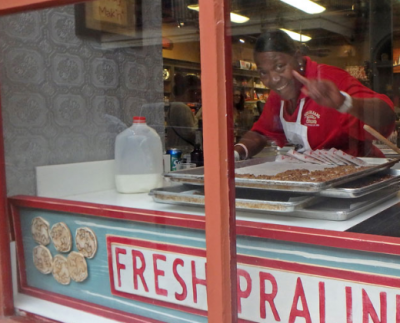 DAY TRIPS & BEYOND: NEW ORLEANS SCHOOL OF COOKING
DAY TRIPS & BEYOND: NEW ORLEANS SCHOOL OF COOKINGBY:GERALD E. MCLEOD
It was a rainy weekend in the French Quarter. Showers and lightning had canceled the last acts on Saturday of Jazz Fest. The Sunday shows at the Fairgrounds went on despite heavy flooding.
On Monday, between showers and under threatening skies, with a group of friends, I ducked into the New Orleans School of Cooking (NOSOC) for a class in classic Louisiana cooking. What I got for fewer than three Hamiltons was a class act and lunch.
First off, let me say that I think Cajun food is a culinary nirvana. Southern Louisiana cuisine is a world treasure among the best regional cuisines. Jambalaya is nearly a perfect food. Cooking jambalaya or gumbo is basic and the foundation for so many other dining experiences. Cajun cooking is more art than science. I have had excellent results with several complicated recipes that are more science project than art project. Anyone could get the same results.
The class at NOSOC was a small epiphany for me. I learned a few things that my grandmother should have taught me, if she had known what Cajun food was. Instead, I was lucky enough to have Chef Kevin Belton demonstrate the finer points of Creole cooking. (To clarify, Creole cooking is “city food” and Cajun is “country food.” Because he grew up in New Orleans, Chef Kevin prefers to call his cooking “Creole.”)
Big Chef Kevin
The New Orleans School of Cooking is hidden on St. Louis Street between Chartres and Decatur streets around the corner from the courthouse and Paul Prudhomme’s K-Paul’s Louisiana Kitchen in the French Quarter. The front part of the building is a tourist souvenir store of Louisiana spice mixes, kitchen tools, and a woman in the front window making pralines (pronounced “praw-leens”).
Day Trips & Beyond: New Orleans School of Cooking
Cajun cooking made simply good
BY GERALD E. MCLEOD, 9:00AM, WED. MAY 18, 2016print
write a letterIt was a rainy weekend in the French Quarter. Showers and lightning had canceled the last acts on Saturday of Jazz Fest. The Sunday shows at the Fairgrounds went on despite heavy flooding.
On Monday, between showers and under threatening skies, with a group of friends, I ducked into the New Orleans School of Cooking (NOSOC) for a class in classic Louisiana cooking. What I got for fewer than three Hamiltons was a class act and lunch.
First off, let me say that I think Cajun food is a culinary nirvana. Southern Louisiana cuisine is a world treasure among the best regional cuisines. Jambalaya is nearly a perfect food. Cooking jambalaya or gumbo is basic and the foundation for so many other dining experiences. Cajun cooking is more art than science. I have had excellent results with several complicated recipes that are more science project than art project. Anyone could get the same results.
The class at NOSOC was a small epiphany for me. I learned a few things that my grandmother should have taught me, if she had known what Cajun food was. Instead, I was lucky enough to have Chef Kevin Belton demonstrate the finer points of Creole cooking. (To clarify, Creole cooking is “city food” and Cajun is “country food.” Because he grew up in New Orleans, Chef Kevin prefers to call his cooking “Creole.”)
Big Chef Kevin
The New Orleans School of Cooking is hidden on St. Louis Street between Chartres and Decatur streets around the corner from the courthouse and Paul Prudhomme’s K-Paul’s Louisiana Kitchen in the French Quarter. The front part of the building is a tourist souvenir store of Louisiana spice mixes, kitchen tools, and a woman in the front window making pralines (pronounced “praw-leens”).
In the back of the building, separated by a wall of windows from the store are a large dining room with a half-dozen big round tables and a kitchen counter with a large mirror on the ceiling revealing the action on the stove top and the counter.
Big Chef Kevin is the kind of guy who takes charge of a room like a former professional football player – which the self-taught, 330-plus-pound cook was at a young age. Now he has found his calling in teaching others how to prepare the food that his mother and grandmother cooked.
From the start of the cooking demonstration Chef Kevin joked, prodded, and teased the packed dining room. The students were from all over the U.S. and several countries. The arrangement of the class was quite simple. We watched as Chef Kevin nonchalantly made gumbo, jambalaya, and pecan pralines. With a Larry Wilmore-like delivery, Chef Kevin was entertaining and informative, but never condescending unless you took yourself too seriously.
Day Trips & Beyond: New Orleans School of Cooking
Cajun cooking made simply good
BY GERALD E. MCLEOD, 9:00AM, WED. MAY 18, 2016print
write a letterIt was a rainy weekend in the French Quarter. Showers and lightning had canceled the last acts on Saturday of Jazz Fest. The Sunday shows at the Fairgrounds went on despite heavy flooding.
On Monday, between showers and under threatening skies, with a group of friends, I ducked into the New Orleans School of Cooking (NOSOC) for a class in classic Louisiana cooking. What I got for fewer than three Hamiltons was a class act and lunch.
First off, let me say that I think Cajun food is a culinary nirvana. Southern Louisiana cuisine is a world treasure among the best regional cuisines. Jambalaya is nearly a perfect food. Cooking jambalaya or gumbo is basic and the foundation for so many other dining experiences. Cajun cooking is more art than science. I have had excellent results with several complicated recipes that are more science project than art project. Anyone could get the same results.
The class at NOSOC was a small epiphany for me. I learned a few things that my grandmother should have taught me, if she had known what Cajun food was. Instead, I was lucky enough to have Chef Kevin Belton demonstrate the finer points of Creole cooking. (To clarify, Creole cooking is “city food” and Cajun is “country food.” Because he grew up in New Orleans, Chef Kevin prefers to call his cooking “Creole.”)
Big Chef Kevin
The New Orleans School of Cooking is hidden on St. Louis Street between Chartres and Decatur streets around the corner from the courthouse and Paul Prudhomme’s K-Paul’s Louisiana Kitchen in the French Quarter. The front part of the building is a tourist souvenir store of Louisiana spice mixes, kitchen tools, and a woman in the front window making pralines (pronounced “praw-leens”).
In the back of the building, separated by a wall of windows from the store are a large dining room with a half-dozen big round tables and a kitchen counter with a large mirror on the ceiling revealing the action on the stove top and the counter.
Big Chef Kevin is the kind of guy who takes charge of a room like a former professional football player – which the self-taught, 330-plus-pound cook was at a young age. Now he has found his calling in teaching others how to prepare the food that his mother and grandmother cooked.
From the start of the cooking demonstration Chef Kevin joked, prodded, and teased the packed dining room. The students were from all over the U.S. and several countries. The arrangement of the class was quite simple. We watched as Chef Kevin nonchalantly made gumbo, jambalaya, and pecan pralines. With a Larry Wilmore-like delivery, Chef Kevin was entertaining and informative, but never condescending unless you took yourself too seriously.
A Few Basic Rules
Having taught classes at NOSOC for more than 20 years, Chef Kevin’s delivery was as smooth as the pound of butter melting in the big stock pot on the stove. It was like sitting in a friend’s kitchen listening to him tell culinary heritage stories and give cooking tips.
To Chef Kevin, Creole cooking is simply adapting the recipe to what you have available. Even if that means making a gumbo with Kentucky Fried Chicken. “I’m going to teach you a few basic rules,” he said. “Then you go home and make it like you like it. No matter where you are, you can take what you’ve got and make a gumbo.”
Without much chance of giving away too many of Chef Kevin’s secrets, here are a few of the things I learned from him in less than three hours:
• Making a roux is like making gravy. You’re basically cooking flour in oil. The length of time you cook it depends on how dark you want the roux. Stir it continuously.
• Paprika is dried red bell pepper.
• Andouille is a firm, smoked German sausage like the kind popular in Central Texas.
• Frozen okra is less slimy than fresh. Sauté fresh okra to remove some of the sliminess.
• Filé is fine green powder of young dried sassafras leaves. Don’t add it during cooking. Place it on the table to be added just before eating and to personal preference.
• Never cook with plain water; always use a stock.It’s All in the Roots
New Orleans cooking is so unique because of its roots, Chef Kevin said. “French, Spanish, Native American, African; everyone contributed from their home and replicated what they knew as best they could with what was available.”
The time seemed to fly by in the cooking class. It was a fun way to learn some basic cooking techniques that work in all kinds of dishes. Included in the price of admission were a couple of pitchers of Abita beer and a generous sampling of the gumbo, jambalaya, and pralines. “The most important part of Louisiana cooking is sitting at the table, visiting, and eating. It doesn’t matter what’s on the table,” Chef Kevin said in summation. “It’s who’s at the table that matters.”
The New Orleans School of Cooking and Louisiana General Store is at 524 St. Louis St. in the French Quarter. The school offers morning and afternoon classes with a rotating lineup of instructors. The classes range from relaxed demonstrations to intense hands-on instructions. Reservations can be made atwww.nosoc.com or by calling 800/237-4841.
Look for Chef Kevin Belton on his new public television show New Orleans Cooking With Kevin Belton or pick up one of his Creole cookbooks.
“3-COURSE INTERVIEW: ANNE LEONHARD A FOOD NETWORK COOKING CHAMP TALKS ABOUT MAKING NEW ORLEANS HOLIDAY MEALS”
By Helen Freund | GambitA kindergarten teacher turned tour guide turned culinary instructor, Anne Leonhard, 72, recently won the “Clash of the Grandmas” and a $10,000 prize on a Food Network cooking competition. The show featured four grandmothers in a series of challenges culminating in a Thanksgiving Day throwdown, which Leonhard won with her apple brioche bread pudding with Calvados. Leonhard spoke to Gambit about learning to cook and holiday meals.
How did you go from being a schoolteacher to a culinary instructor?
Leonhard: My whole family — they were all good cooks on both sides of the family, but my mother never encouraged us to come into the kitchen. Teenagers are messy, and she didn’t want any of that in there. So (when) I was about to get married, I still didn’t know how to cook. The day before I got married, I went to my grandmother’s house with a notebook and pen and she just talked me through it all while I wrote it down. Unfortunately, I lost that notebook during (Hurricane) Katrina, but (the information) stayed with me.
I taught school for 20 years and then when I retired, I started working as a tour guide. I’d always take my groups by the (New Orleans School of Cooking) and realized one day … that I could do this. It’s a lot like being a tour guide, just in the kitchen. They call us chefs, but we’re not really chefs — we’re just really good cooks. I’ve always been good at public speaking; it’s always come natural to me. That was 13 years ago.
How was the competition?
L: I’ve been on the Steve Harvey Show a lot… but the competitive thing? Let me tell you, that was something else. It was a real experience. I had no idea what to expect. I don’t watch food television shows — I guess I should have, maybe then I would have been more prepared. I didn’t really enjoy the competition part, but I did enjoy the experience. I was the oldest in the group and up against some (women) who had professional experience. One of them had been a private chef for 15 years. Honest to God, when I saw what I was up against, I never, ever, ever thought I’d end up winning. I just said, “Don’t make a fool of yourself and don’t get kicked out.” That would have been so embarrassing.
What’s special to you about New Orleans holiday food?
L: I’ve never lived anywhere else, but I think because we’re surrounded by seafood here in Louisiana, (many) people have that as a part of their holiday meals. I think that’s something really unique about us. In my family, there’s always oyster soup and oyster patties … maybe a type of oyster dressing. And we love gravy, dark gravy. In our family, gravy is considered a beverage.
We’re also not afraid to use seasoning in New Orleans. (On the show) they’d watch me season things and gasp. (At the New Orleans School of Cooking), we get a lot of elderly who say, right away, “We don’t like spicy food.” But it’s not spicy; it’s just well-seasoned.
They think it’s going to be so complicated, but it’s really very basic. We teach them how to make gumbo, jambalaya, shrimp Creole, crawfish etouffee, pralines. It’s fun watching people who don’t have a clue how to cook realize it can be so easy.
-
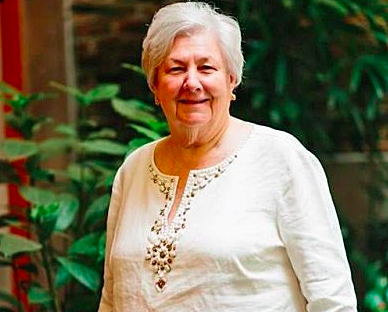 NEW ORLEANS COOKING TEACHER WINS “CLASH OF THE GRANDMAS”
NEW ORLEANS COOKING TEACHER WINS “CLASH OF THE GRANDMAS”Judy Walker, NOLA.com | The Times-Picayune
Yet another New Orleanian has proven the superiority of the city’s cooks on national television. Anne Leonard, an instructor at the New Orleans School of Cooking, took home the $10,000 top prize on the Wednesday (Nov. 18) “Thanksgiving Throw Down” episode of “Clash of the Grandmas” on the Food Network.
“The camaraderie among the women was really wonderful,” Leonard said in a press release. “Overall, it was an incredible experience.”
Leonard went through four rounds on the show, competing against four other grandmothers in making the best Thanksgiving meal. Her winning dish was Apple Pie Bread Pudding.
A portion of her winnings will be donated to a girls’ home in Haiti, Shelby’s House, established in 2013 in memory of her granddaughter Shelby, who died from lymphoma at age 15.
Leonard has been on network television several times. She and lifelong friend Harriet Robin, also an instructor at the New Orleans School of Cooking, have appeared several times on the Steve Harvey show. Harvey calls them his New Orleans Grannies. They will appear again on his show on Nov. 24 (Tuesday) at 2 p.m. on WDSU-TV, the NBC affiliate, on a Thanksgiving show.
You can see the Food Network show as well to see Leonard in action. The episode of “Clash of the Grandmas” will air again at 3 p.m. (CT) Sunday.
-
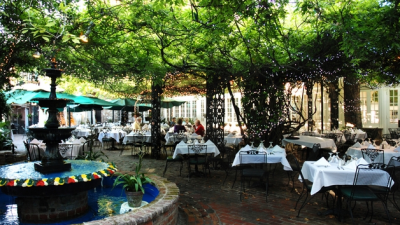 4 ADVENTURES TO EXPLORE THE FOODIE CULTURE IN NEW ORLEANS
4 ADVENTURES TO EXPLORE THE FOODIE CULTURE IN NEW ORLEANSTHU THAN
étouffée, Oysters Rockefeller, the Sazerac cocktail and pralines — it’s impossible to tell the story of New Orleans without talking about its famous dishes, drinks and desserts. You could read all about the finer qualities of these culinary icons, but to really get what Cajun and Creole cuisine are like, your clients simply have to come down here and taste it for themselves.
Thankfully, several companies have stepped up to give visitors an insider’s look at the history and mysteries of these delicacies. Here are a few to whet your appetite.
Food Tours
Destination Kitchen/Food Tours New Orleans specializes in full-immersion cooking and dining experiences, with tours that go through the French Quarter, Uptown and St. Charles Avenue. You’re your clients spend a day getting their fill of beignets and French Market products you won’t find outside of New Orleans, or venture to Garden District landmarks, where guides will tell all about the history of New Orleans and its famous food.
Speaking of history, New Orleans Culinary History Tours takes visitors to two of the city’s oldest restaurants (among them: Antoine’s and Tujague’s, both in business for over 150 years). If your clients are up for combining your tour with a cooking demo, New Orleans Culinary History Tours provides those, too.
Clearly, the food history in New Orleans goes deep, so check out these additional culinary tours — each offering a unique food tour around New Orleans.
READ MORE New Orleans Mardi Gras: History, Tradition and Insider’s Tips
SoFAB: The Southern Food and Beverage Museum
The Southern Food and Beverage Museum showcases the best of south Louisiana and beyond. The museum honors high-profile restaurateurs and chefs, as well as the small-scale cooks and homemakers who have added their own flavors to Southern cuisine for generations.
Cooking Classes
New Orleans has a rich dining tradition, and at Langlois Culinary Crossroads and The New Orleans School of Cooking, you can actively take part in it. Stand shoulder-to-shoulder with chefs and fellow culinary enthusiasts to learn tricks of the trade, all while dining on Creole and Cajun dishes in the heart of the city that made them famous.
Meet some of the city’s most beloved local celebrities and chefs at New Orleans Cooking Experience, located just steps from the Lower Garden District. Start your clients’ visit with a glass of wine and a four-course cooking demonstration, while learning about the intricacies of Creole cuisine and the stories behind the dishes. Then tour the 19th century Queen Anne home where classes are held, followed by an expertly prepared dinner.
Beer and Spirits Tours
See what’s brewing at Gordon Biersch, located, appropriately, in the old Jax Brewery building on the Mississippi riverfront. Join the brew master and staff on a behind-the-scenes tour of Gordon Biersch’s beer making process, where you’ll learn the difference between preparing Hefeweizens, pilsners and more exotic brews.
Head to a brewery tour at Crescent City Brewing. This brewery is believed to be the oldest in Louisiana and is located in a historic Creole townhouse just a few blocks from Jackson Square and Bourbon Street. Taste the four brews and dive in to the tasty menu while listening to live jazz daily.
At Drink & Learn, the experience delivers interactive presentations that use the city’s famous drinks to describe the rich history of New Orleans. Historian Elizabeth Pearce will guide you through the libations as she tells the tales of rum, rebellion, whiskey and more.
Drink up and enjoy Gray Line Tours’ cocktail walking tours, offered at 4 p.m. daily. Learn the fascinating stories behind the Sazerac and absinthe, whose close association with New Orleans is the stuff of legend.
-
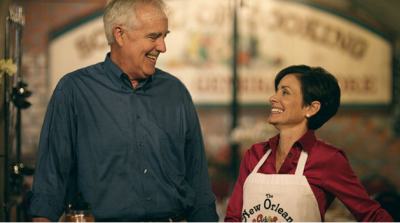 HOW A $150,000 GRANT EMPOWERED THE NEW ORLEANS SCHOOL OF COOKING
HOW A $150,000 GRANT EMPOWERED THE NEW ORLEANS SCHOOL OF COOKINGBy Carolyn Heneghan
Visitors to New Orleans often want to take a piece of the city’s culinary magic home with them, and many do just that by learning traditional Cajun and Creole cooking skills in the heart of the French Quarter.
For 35 years, the New Orleans School of Cooking has been has been sharing the Fun, Food and Folklore of this region with the world. Through cooking demonstrations and hands-on classes, thousands of local and international students come together to learn how to prepare unique local dishes and understand more about culture that is the essence of the city. Charismatic and well-known chefs bring ‘flavor’ to classes, teaching the basics behind classic Louisiana dishes, such as gumbo, jambalaya and pralines, while incorporating snapshots of history into their lessons.
But classes are only part of what the New Orleans School of Cooking currently offers.
Through a $150,000 grant from Chase, Greg and Suzanne Leighton have been able to reach beyond the French Quarter to dinner tables around the world. In early 2015, The New Orleans School of Cooking received one of 20 Mission Main Street Grants® which gave the Leighton’s the capital needed for two important expansions. First, they were able to extend distribution of the school’s extremely popular Louisiana General Store’s branded products, such as Joe’s Stuff seasoning blend, Sliced Garlic and Olive Salad. Simultaneously, they were able to launch the New Orleans School of Cooking Foundation, which will further increase the school’s donations to local nonprofits.
“JPMorgan Chase is as invested in New Orleans as we are,” says CEO Greg Leighton. “As big as Chase is, it has a small town bank feel in this city. The reaction of local Chase employees to our win was impressive and authentic.”
Since the grant, the school has quickly caught up to speed on the global resources and capabilities of JPMorgan Chase. Now both a lending and business banking partner of the bank, the school has been empowered to purchase a centralized warehouse to further expand its ecommerce business internationally.
In New Orleans, we call getting a little something extra ‘lagniappe,’ The Mission Main Street Grant® was a lot of lagniappe. Great things happen when you believe in what you’re doing and tell a compelling story. When JPMorgan Chase believes in what you do, and when your story strikes a chord with them, anything can happen. We’re proof of that.
Greg Leighton, CEO, New Orleans School of Cooking
A freelance journalist, Carolyn has been a resident of New Orleans since she was ten years old.
-
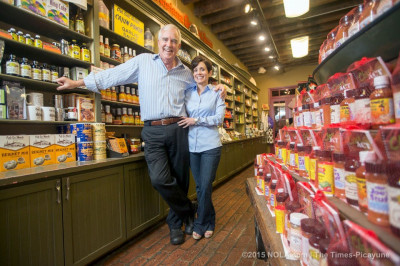 NEW ORLEANS SCHOOL OF COOKING SEEKS RECIPE FOR GLOBAL SUCCESS
NEW ORLEANS SCHOOL OF COOKING SEEKS RECIPE FOR GLOBAL SUCCESSJennifer Larino, NOLA.com | The Times-Picayune
Leighton excused her way through browsing tourists on a recent Friday morning to pick up the pepper jelly she gets from a Folsom producer she met at a local farmer’s market. The jar labels are decorated with the jelly maker’s old family photos, she pointed out.
A nearby shelf held infused olive oils handmade by one of her daughter’s former schoolmates. The olive oil maker just moved into a commercial kitchen in Abita Spring.Those who try to leave without trying a praline are swiftly corrected. “We make them right here,” Leighton said, walking over to a corner where a woman in an apron smiled and stirred a pot of sugar, cream and butter over a burner.
Husband and business partner Greg Leighton joked that Suzanne knows every inch of the 900-square-foot general store on St. Louis Street. Behind French doors at the back is a demonstration kitchen where tourists pay from $30 to $140 to learn how to make jambalaya, gumbo and other classic New Orleans fare.
The New Orleans School of Cooking will celebrate 35 years in business in June. New Orleans tourism remains the roux, the bedrock of its business.
But there is one recipe the Leightons have yet to perfect — how to grow their business outside the walls of the small St. Louis Street location.
“Our customers are literally from all over the world,” Greg Leighton said. “The idea has always been, ‘let’s see if we can take the New Orleans School of Cooking brand national, even international.'”
Opening the New Orleans School of Cooking in a city like Chicago or New York would not work, Suzanne Leighton said.
“I don’t think you can duplicate what we do here,” she said.
Earlier this year, Chase Bank chose the New Orleans School of Cooking out of 25,000 businesses nationwide for a grant through its Mission Main Street program. It is among 20 companies nationwide to receive $150,000 to grow their business.The Leightons are using the money to update the New Orleans School of Cooking logo and launch a branded line of spices, oils and other foodstuffs over the summer. They aim to sell online and on store shelves internationally. International retail sales is new territory, but the Leightons see it as the only clear path toward growth.
‘We share what we love’
Tourism is a thread that runs throughout the story of the Leighton family. The couple met in 1985 at redeveloped Jax Brewery in the French Quarter. Suzanne worked in one of the property’s retail shops, and Greg had moved from New York to New Orleans for a year to help start a business there.
He decided to extend his stay. The two married in 1987.
Greg and a former partner bought the New Orleans School of Cooking in 1997 from a corporate owner.The corporate owner had tried to make the New Orleans School of Cooking look and feel like the country stores it operated in other states, he said. He sought to build a unique New Orleans brand.
“You could be anywhere in the world and when you said ‘New Orleans School of Cooking,’ people would have a pretty good idea of where you are and what you’re about,” he said. “I thought that was very strong.”
The Leighton’s moved the cooking school into a renovated 19th century molasses warehouse a half-block off Decatur Street.
They hired chefs who shared family gumbo recipes seasoned with bits of New Orleans folklore. Chefs Harriet Robin and Anne Leonhard are grandmothers who grew up down the street from one another.
Today, visitors who complete a cooking course get a diploma mailed to them, but only if they share a photo of a dish they prepared at home on the school’s Facebook page.Suzanne scours farmer’s markets for local products to sell alongside bottles of Tabasco hot sauce and other popular Louisiana products.
“We get hundreds and hundreds of visitors that come to New Orleans to visit. They become part of our family,” she said. “We share what we love with them.”No tourists, no business
Online sales were an afterthought for the Cooking School of New Orleans until Hurricane Katrina.
The Leighton’s, like most in the city, “were in survival mode” as tourist numbers plummeted in the wake of the storm.
Greg guessed it would take three to five years for revenue to recover to pre-storm levels. It took six.“We had no tourists. We had no business,” Suzanne Leighton said.
The Leighton’s edged into e-commerce. They realized visitors paid double, sometimes triple, to ship Joe’s Stuff, the cooking school’s signature spice mix, across the world.Greg said it has been slow work pulling together capital to hire new staff, expand storage space, develop new products and improve shipping. The cooking school’s online store needs an upgrade along with its 35-year-old logo.
The Leighton’s entered the Chase Bank competition last summer, prodded by their product development manager. They did not expect much.
Greg had to pause when he recalled getting the call about the $150,000 grant, thrown off guard by the tears in his eyes.“You’ve just worked so hard, for so long and then this call comes,” he said.
The money has accelerated plans to add seasonings, infused olive oils, jellies and other specialties to the school’s existing line of products.
Several of the small Louisiana food makers that got their start in the New Orleans School of Cooking retail store have offered to make private label products for the company. Its custom spice blends are made at Chef Paul Prudhomme’s Magic Seasoning Blends plant in Harahan.Built on sharing
The grant money will also be a catalyst for a more personal cause.
Suzanne and Greg Leighton lost their son, William, to cancer in 1994. William was 5. For years, the Leighton’s, who have four daughters, hosted fundraisers for A Child’s Wish of Louisiana, which helped send the family to Disney World when William was 3.They plan to set up a New Orleans School of Cooking charitable fund, which will donate a portion of cooking class revenues to good causes.
The New Orleans School of Cooking was built on sharing, Greg said.
“Spend a couple of hours with us and you’re taking something away. Recipes, a full stomach, a new friendship,” he said. “You’re going to take something away.”
